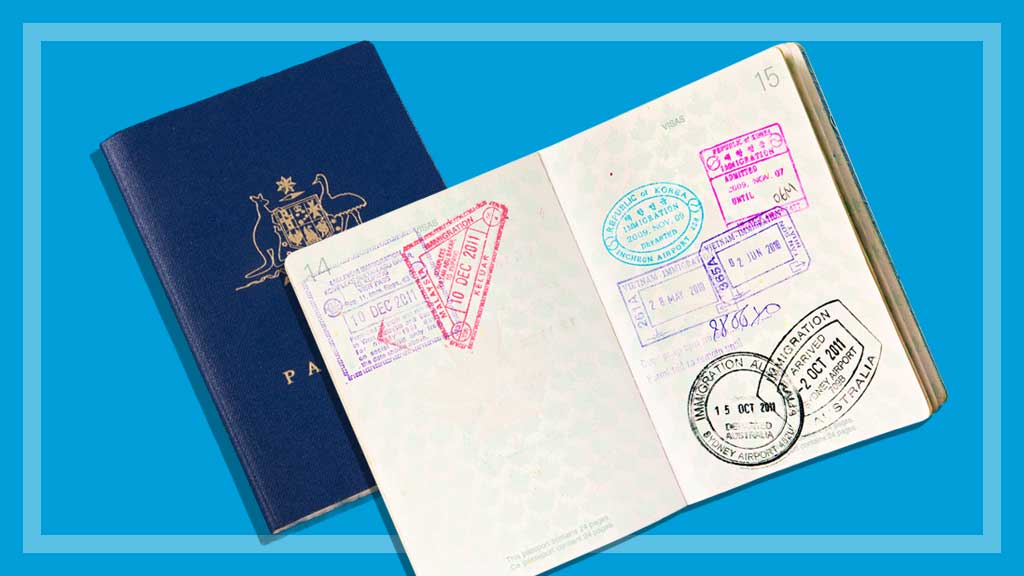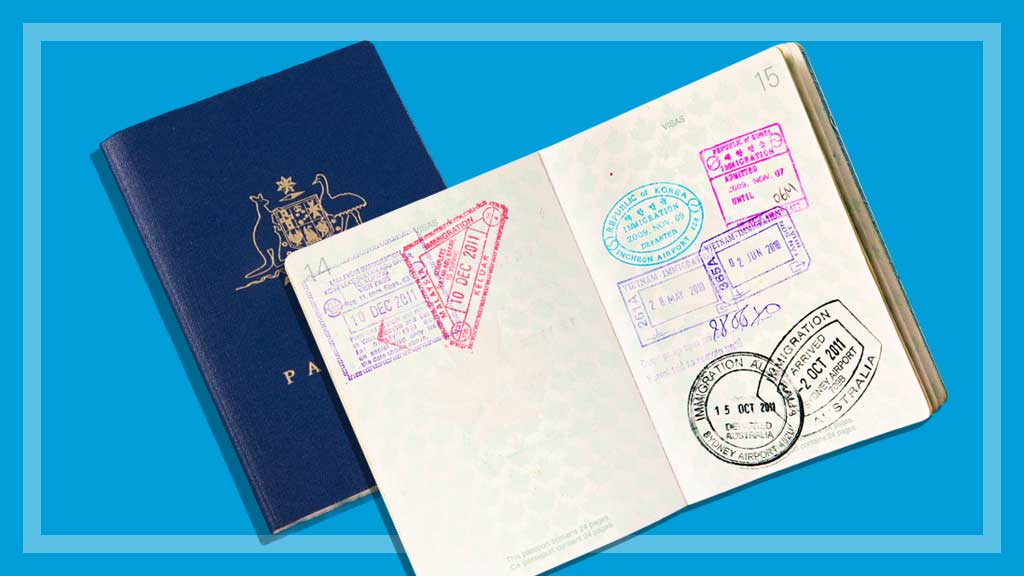Planning multiple trips? Multi-trip travel insurance offers a smart solution for travelers seeking comprehensive coverage across various journeys. This guide delves into the specifics of multi-trip policies, comparing them to single-trip options and highlighting their potential cost savings and enhanced flexibility. Understanding the nuances of coverage, limitations, and the claims process is key to making an informed decision.
From medical emergencies to trip disruptions, multi-trip insurance provides peace of mind for frequent travelers. It simplifies the process of securing coverage for multiple adventures, consolidating protection and streamlining the administrative burden. This detailed overview explores the benefits, limitations, and considerations involved in choosing the right multi-trip insurance plan.
Definition and Scope of Multi-Trip Travel Insurance
Multi-trip travel insurance provides comprehensive coverage for multiple trips within a specified period, offering significant advantages over purchasing separate single-trip policies. This type of insurance is tailored for frequent travelers, offering cost savings and streamlined administration.
This policy covers all your trips within a defined timeframe, simplifying the process of purchasing protection for each journey. It’s a valuable solution for individuals or families who frequently travel.
Key Features and Benefits
Multi-trip insurance combines the benefits of multiple single-trip policies into a single contract, eliminating the need for separate applications and premiums for each journey. This streamlined approach significantly reduces administrative burdens and potential errors. The coverage period is typically pre-defined, encompassing a specified number of trips over a certain duration.
Comparison with Single-Trip Policies
Single-trip policies cover only one trip, requiring a new application and payment for each journey. Multi-trip policies offer a more cost-effective solution for frequent travelers, as the premium is often lower than purchasing multiple single-trip policies. This savings is especially pronounced for travelers embarking on numerous short trips.
Advantages of Multi-Trip Insurance
Multi-trip travel insurance proves particularly advantageous for travelers with frequent short trips, such as business trips, family visits, or weekend getaways. It also provides peace of mind for individuals who plan several trips within a year. Moreover, it simplifies the claims process for multiple trips by offering a consolidated process.
Typical Inclusions and Exclusions
The following table Artikels typical inclusions and exclusions of multi-trip travel insurance policies. It’s crucial to carefully review the policy document to understand the precise scope of coverage.
| Coverage Type | Description | Typical Exclusions | Example |
|---|---|---|---|
| Medical Expenses | Covers medical expenses incurred during the insured trips, including emergency medical treatment, hospitalization, and repatriation. | Pre-existing medical conditions (unless specifically covered), cosmetic procedures, treatment for self-inflicted injuries, and routine check-ups. | A traveler experiencing a sudden illness requiring hospitalization during a trip would be covered under this provision. |
| Trip Interruption | Covers expenses if a trip is interrupted due to unforeseen circumstances, such as natural disasters, illness, or family emergencies. | Pre-planned absences from the trip, personal reasons, or voluntary abandonment of the trip. | A traveler whose flight is cancelled due to a volcanic eruption and has to reschedule their trip would be covered for the additional expenses. |
| Baggage Loss or Delay | Covers loss or damage to checked or carry-on baggage, as well as delays that cause significant inconveniences. | Loss due to intentional damage, loss of personal items, and items exceeding the stated policy limits. | A traveler whose luggage is lost during transit, resulting in the loss of essential clothing, would be covered for the replacement value of the lost items. |
| Emergency Evacuation | Covers expenses related to emergency medical evacuation, including transportation and accommodation. | Evacuations due to pre-existing conditions, personal decisions, or travel outside the covered area. | A traveler who needs emergency evacuation due to a serious illness encountered during a trip would be covered for the associated costs. |
Benefits and Advantages

Multi-trip travel insurance offers significant advantages over purchasing multiple single-trip policies, particularly for frequent travelers. It simplifies the travel planning process and often provides cost savings. This streamlined approach to coverage can be highly beneficial for individuals who undertake multiple journeys throughout the year.
Cost-Effectiveness of Multi-Trip Insurance
Multi-trip insurance policies typically offer a more economical option compared to purchasing individual policies for each trip. This is due to the bundled nature of the coverage, which allows insurers to offer discounted rates. Consider a traveler who plans three trips annually. The cost of purchasing three separate single-trip policies might exceed the cost of a single multi-trip policy covering all three journeys.
Flexibility for Frequent Travelers
Multi-trip policies are designed to cater to the needs of frequent travelers. They provide a streamlined approach to insurance, encompassing all trips within a specific timeframe. This flexibility allows travelers to focus on planning their adventures without the added administrative burden of purchasing multiple policies. For example, a businessperson who travels internationally for conferences throughout the year would benefit from a multi-trip policy, encompassing all their scheduled business trips within a specific period.
Streamlined Travel Planning
Multi-trip insurance simplifies the travel planning process. Travelers only need to secure one policy rather than multiple policies for each trip. This simplifies the process of obtaining necessary coverage and reduces administrative hassle. This can be especially helpful for travelers who have a busy schedule or prefer a streamlined approach to travel planning.
Comparison of Policy Costs
The following table illustrates the potential cost-effectiveness of multi-trip insurance compared to purchasing multiple single-trip policies:
| Policy Type | Cost | Flexibility | Potential Savings |
|---|---|---|---|
| Multi-Trip (covering 3 trips) | $300 | Covers all 3 trips within a 12-month period | Potentially $50-$100 compared to purchasing individual policies |
| Multiple Single-Trip (3 trips) | $350-$400 | Requires separate purchase for each trip | Nil to minimal savings if insurance provider doesn’t offer a package discount |
Coverage Options and Limitations
Multi-trip travel insurance policies offer a range of coverage options to protect travelers during multiple trips within a specified timeframe. Understanding the specific coverage provided and any limitations is crucial for ensuring adequate protection. Knowing the exclusions and limitations can prevent unexpected financial burdens during travel.
Comprehensive policies typically include coverage for medical emergencies, trip cancellations, baggage delays, and lost or stolen belongings. However, the scope and extent of coverage vary significantly among policies. It is important to carefully review the policy details to understand the specifics.
Types of Coverage Included
Multi-trip policies commonly include coverage for medical expenses incurred during a trip, trip cancellations or interruptions due to unforeseen circumstances, lost or delayed baggage, and personal liability protection. The specifics of these coverages, including the amount of coverage, are often Artikeld in the policy document.
Limitations and Exclusions
Policies often include limitations and exclusions to define the scope of coverage. These restrictions are designed to prevent misuse and limit the insurer’s financial liability. Understanding these limitations is critical for making informed decisions about travel insurance.
Pre-existing Medical Conditions
Pre-existing medical conditions can significantly impact coverage. Policies typically exclude coverage for pre-existing conditions that manifest during the trip. This means that if a traveler has a pre-existing condition that worsens or requires medical attention during the trip, coverage may be limited or entirely excluded.
Examples of Coverage Denial or Limitation
Consider a traveler with a pre-existing heart condition who experiences a heart attack during a multi-trip vacation. If the heart attack is directly linked to the pre-existing condition, coverage for the related medical expenses might be denied or significantly limited. Similarly, a traveler participating in extreme sports without disclosing it to the insurer might face coverage limitations or denial for injuries sustained.
Table of Common Exclusions
| Exclusion Category | Specific Exclusion | Reason |
|---|---|---|
| Pre-existing Conditions | Conditions not declared and documented in the application | To manage risk and prevent fraudulent claims related to pre-existing conditions that worsen during travel. |
| Adventure Activities | Activities like skydiving, bungee jumping, or white-water rafting without specific coverage | These activities carry higher risk and are often excluded from standard policies to control the insurer’s exposure to significant potential liabilities. |
| War or Terrorism | Trip cancellations or injuries related to war, terrorism, or civil unrest | These events are beyond the control of the insurer and often involve significant risks, making coverage difficult to manage. |
| Personal Misconduct | Injuries or damages resulting from deliberate self-harm or illegal activities | These are not covered due to the intentional nature of the harm and associated moral hazard. |
| Losses due to natural disasters | Losses caused by earthquakes, floods, or hurricanes in a covered area | The risks associated with natural disasters are beyond the control of the insurer, and coverage often involves higher premiums. |
Factors to Consider When Choosing a Policy
Choosing the right multi-trip travel insurance policy is crucial for safeguarding your travel plans and financial well-being. Careful consideration of various factors, from policy terms to the nature of your trips, will ensure you’re adequately protected. This section Artikels key aspects to help you make an informed decision.
Evaluating multi-trip travel insurance options requires a thorough understanding of your travel needs. Different providers offer varying levels of coverage, and the specifics of your trips will influence the most suitable policy.
Policy Terms and Conditions
Thorough research into the policy terms and conditions is essential. Understanding the specific coverage details, exclusions, and limitations is vital to avoiding unpleasant surprises during a trip. Pay close attention to the definition of covered events, as well as the procedures for making claims. Reading the fine print, and understanding the language used, is key to selecting a policy that effectively protects your interests. Reviewing the claims process and the timeline for processing claims is equally important. This enables you to be prepared for the steps involved if a claim arises.
Impact of Trip Length and Number on Pricing
The length of each trip and the total number of trips significantly influence the policy’s price. Longer trips often attract higher premiums, as the potential for unforeseen events and prolonged periods of coverage increases. Similarly, multiple trips within a defined period can lead to higher overall costs compared to a single trip. Providers typically offer tiered pricing structures that reflect the duration and number of trips included in the policy. For example, a policy covering multiple trips over several months might be more expensive than a policy covering a single, shorter trip.
Comparing Travel Insurance Providers
Different providers offer varying levels of coverage and pricing. Comparing multiple providers is crucial. Consider factors like the reputation and financial stability of the insurer, as well as their track record in handling claims. Read reviews and compare policy features, coverage limits, and specific exclusions. A comprehensive comparison chart can assist in identifying the most suitable option. For example, one insurer might excel in medical emergencies, while another may be better equipped to handle lost baggage or trip cancellations.
Claims Process and Procedures

Multi-trip travel insurance policies provide financial protection for unforeseen events during multiple trips. A clear understanding of the claims process is crucial for travelers to effectively utilize the coverage they’ve purchased. Knowing the steps involved and required documentation will help expedite the claim resolution process.
Filing a claim under a multi-trip policy typically follows a structured process designed to ensure fair and efficient handling of each case. Understanding the policy’s terms and conditions, as well as the claim procedures, is vital for travelers to navigate the process smoothly. The process should be clearly Artikeld in the policy document, ensuring clarity and minimizing any confusion or delay.
Claim Filing Procedure Overview
Understanding the claim process is critical for a smooth resolution. The following steps Artikel the typical procedure:
| Step | Procedure | Required Documents |
|---|---|---|
| 1 | Contact the insurance provider or their designated claims department as soon as possible after the event that triggers the claim. Provide details about the incident, including the date, time, location, and a brief description of the circumstances. | Policy details, such as the policy number and the names of the insured parties. Basic information regarding the nature of the event. |
| 2 | Provide all relevant documentation requested by the insurance provider. This may include medical records, police reports, flight or accommodation confirmations, receipts, and other evidence that supports the claim. | Copies of medical bills, receipts for expenses, flight and hotel confirmations, and any other supporting documentation requested by the insurance provider. |
| 3 | Follow the instructions provided by the insurance provider regarding the submission of the claim. This may involve completing online forms, providing additional information, or attending a meeting. Maintain communication with the insurance provider throughout the process. | All previously submitted documents, along with any additional documents requested. Detailed answers to the insurance company’s questions. |
| 4 | Review the response from the insurance provider. If the claim is approved, the provider will Artikel the payment details and process. If the claim is denied, the provider will explain the reasons for the denial and provide any options for appeal. | Copies of the insurance company’s decision letter, outlining the reasons for approval or denial. |
Examples of Claim Situations
Various situations may necessitate filing a claim under a multi-trip travel insurance policy. These include:
- Medical emergencies during a trip, such as illness or injury requiring hospitalization.
- Trip cancellations or interruptions due to unforeseen circumstances, like natural disasters or severe weather events.
- Lost or stolen luggage during a trip.
- Trip delays or missed connections due to unforeseen circumstances.
- Accidental damage to belongings during a trip.
Gathering Necessary Documentation
Thorough documentation is essential for a successful claim. Collect all relevant evidence that supports the event and the resulting claim. This may include:
- Medical records, including doctor’s notes, prescriptions, and hospital bills.
- Police reports or other official documents related to the incident.
- Flight confirmations, accommodation vouchers, and receipts for expenses.
- Photos or videos of damaged items or injuries.
- Copies of travel insurance policy documents.
Epilogue
In conclusion, multi-trip travel insurance provides a cost-effective and convenient solution for frequent travelers. By understanding the coverage, limitations, and claims process, you can make an informed decision about whether a multi-trip policy aligns with your travel needs. The potential cost savings and streamlined administration make it a compelling choice for those embarking on multiple journeys. Ultimately, choosing the right insurance plan empowers you to travel with confidence and peace of mind.
Q&A
Does multi-trip insurance cover lost luggage on all trips?
Coverage for lost luggage often varies by policy. While some multi-trip policies cover lost luggage for all trips, others might have specific limits or exclusions. Always review the policy’s fine print for clarity.
What if I have a pre-existing medical condition?
Pre-existing conditions can sometimes impact coverage. Multi-trip policies often have specific clauses regarding pre-existing conditions. It’s essential to thoroughly review the policy’s terms and conditions to understand the limitations and potential exclusions.
How does the number of trips affect the cost of multi-trip insurance?
The cost of multi-trip insurance usually depends on the total duration of all trips and the total number of trips. Longer durations and more trips typically result in higher premiums.
Multi-trip travel insurance is great for extended adventures, but what if you need specialized coverage? Consider supplementing your multi-trip travel insurance with coverage for items like cameras and electronics. IMG insurance, for example, offers robust protection for valuable equipment. This additional layer of protection ensures you’re covered for potential damage or loss of your gear during your extended journeys, and can be a worthwhile addition to any multi-trip travel insurance plan.
Multi-trip travel insurance can be a lifesaver, especially when considering the potential expense of medical emergencies abroad. Factors like the length of your trip and the specific destinations you’ll visit can significantly impact the premium cost, but understanding health insurance cost in your home country can help you gauge the overall coverage you need. Ultimately, multi-trip insurance can give you peace of mind knowing you’re covered for a variety of scenarios, including medical situations, during your extended travels.
Multi-trip travel insurance is a great way to protect yourself on extended adventures. It’s crucial to consider comprehensive coverage, especially if you’re a student. If you’re planning a long trip, you might want to look into options like aetna student health which offers supplemental coverage for various unforeseen circumstances, potentially adding extra peace of mind to your travel plans.
This kind of extra coverage can be invaluable when you’re traveling extensively.

